Understanding your climate is key when you're adding to your home's outdoor spaces. Whether you're thinking about a simple deck or an expansive outdoor kitchen, knowing your climate's particulars will greatly improve the outcome. Here are some design concepts to help you create a relaxing and comfortable outdoor room, perfect for where you live.
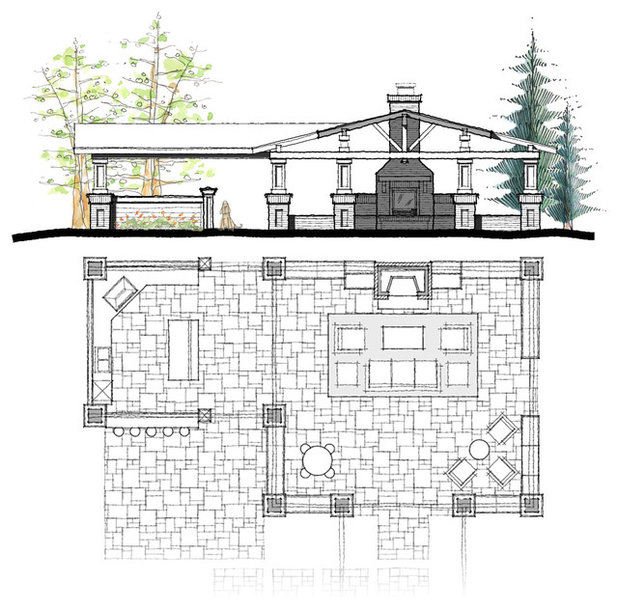
Alex Jewett: Godden Sudik Architects
First identify the reasons you want an outdoor space. How will you use it most? And when?
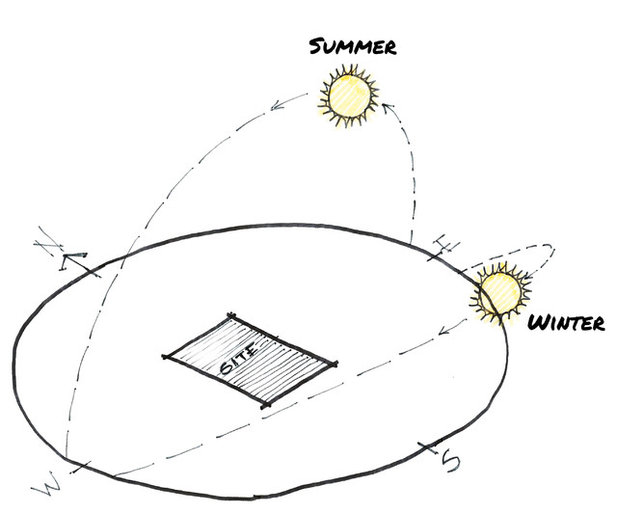
Alex Jewett: Godden Sudik Architects
SunIn the northern hemisphere, the sun is higher in the sky during summer and lower during winter. Additionally, we all know that the sun rises in the east and sets in the west, so there is more sun on the south side of a building than on the north side.
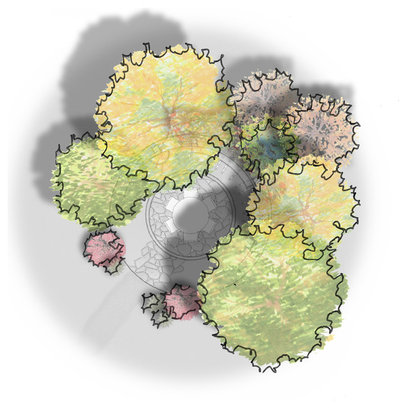
Alex Jewett: Godden Sudik Architects
In summer we prefer shade, whereas in winter sunlight is integral to an outdoor space. Unless you live in a warm climate or in the southern hemisphere, consider an outdoor space away from the north side of your home, as the north side is in constant shade during winter. Instead, use a location on the south side or in an open area away from your house and surround the space with deciduous trees. In summer deciduous trees provide ample shade, whereas during winter, when the leaves are gone, the sun conveniently passes through.
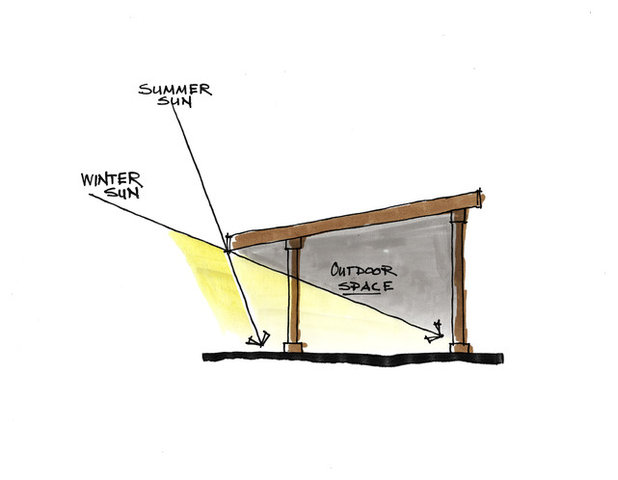
Alex Jewett: Godden Sudik Architects
Passive solar design helps control the impact of sunlight, allowing it into a space during the colder months and blocking it when the weather is hot. Large overhangs help you control and use the sun to your advantage.
This same concept can be achieved on a smaller scale through the use of louvers. By slightly angling the louvers, based on your location, you can control how the sun is blocked or permitted to enter a space, depending on the time of year.
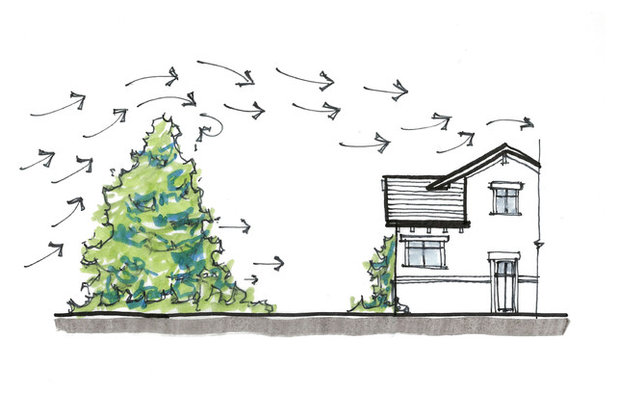
Alex Jewett: Godden Sudik Architects
Wind Know the most common direction the wind travels in where you live. Impacts of the wind, much like the sun, can either be positive or negative. Stronger winds tend to be uncomfortable, while a light breeze, especially when it’s hot, is typically refreshing.
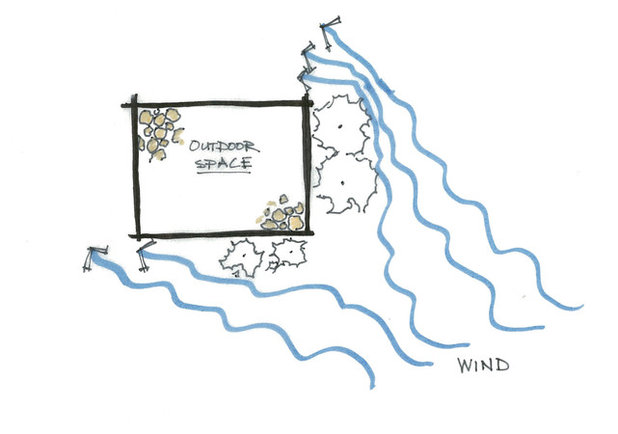
Alex Jewett: Godden Sudik Architects
Trees and bushes can help lessen the impact of wind. Landscape plantings can also create softer and more enjoyable outdoor spaces, as long as they don’t block views you want to preserve.
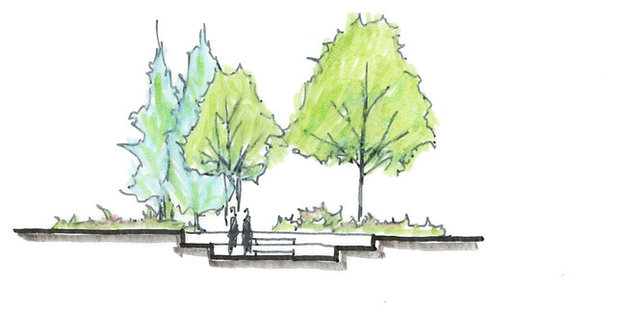
Alex Jewett: Godden Sudik Architects
A sunken courtyard combined with plantings can also help reduce the impacts of wind. An outdoor space such as this would also have a sense of privacy and be a refuge in which to relax.
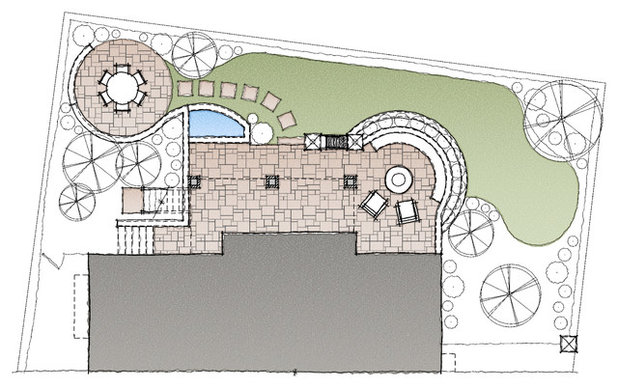
Alex Jewett: Godden Sudik Architects
WaterWater is one of the most interesting elements in a landscape design. While water gives us life, it can also be one of the most destructive elements. We all know that we need water to keep our gardens alive, but we must also make sure that the same water does not destroy our outdoor spaces.
If you have an impervious surface, such as concrete or brick pavers, allow for water to run off in a controlled manner. You should have around a 1/4-inch slope toward an area of permeable material, such as a yard, planting bed or mulched area.
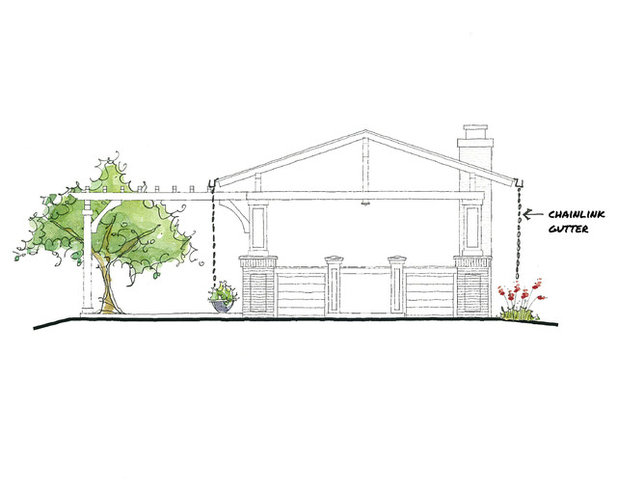
Alex Jewett: Godden Sudik Architects
A cover protects an outdoor space from rain and snow and creates a comfortably shaded place. Gutters direct water away from the structure. Consider placing a planting bed at the end of the downspout to utilize the water and reduce watering costs in your garden. Decorative rain chains direct water while adding design interest.
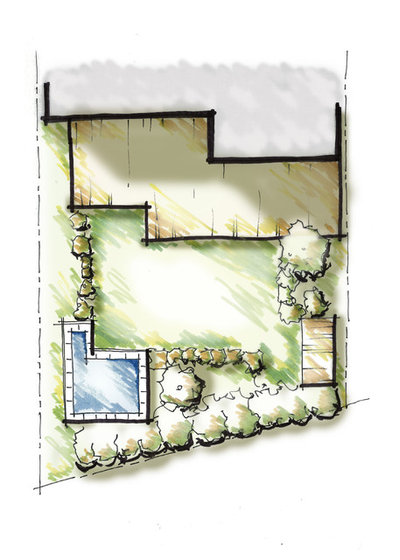
Alex Jewett: Godden Sudik Architects
A fountain or small creek can enhance the ambience of your outdoor space. The sound of water has the ability to create a relaxing environment and can help dampen unwanted noise, such as traffic on a busy road nearby.





